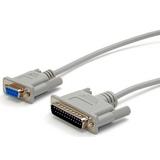You should ask to see the Spindle time, but remember that the hours on Fanuc controls can be reset.
Make sure someone there can run the CNC (someone that knows the control) to test all the functions you know you will be using on your parts (live tooling, tool-change, spindle orientation, chip conveyor, etc, etc) See below for a quick inspections list.
Ask what company they bought the machine from. If its from a big company, there is a good chance that they ran the machine 24/7.
Most CNCmachines have a Data Sheet in the back panel with all the options it came with. make sure this sheet has the same serial # as the machine. most manufactures will give you lots of information (to whom it was originally sold to) on the machine if you give them the serial #. You should get a serial # also to check if the dealer you are buying the machine from is the actual owner of the machine and not brokering the machine.
If the machine is older, make sure you get as many manuals as possible (Parts, Maintenance, Programing, Electrical, LADDER!!!) If the machine is really old, ask if they have tool holders as well.
Thanks to Marcos for contributing the information above.
Its always a good idea to have a qualified service rep to check the machine over, but go through this list yourself first to make sure he doesn't forget anything of great importance. The below doesn't take in consideration of alignments or tolerance issues. This is only a quick guide that anyone can do.




